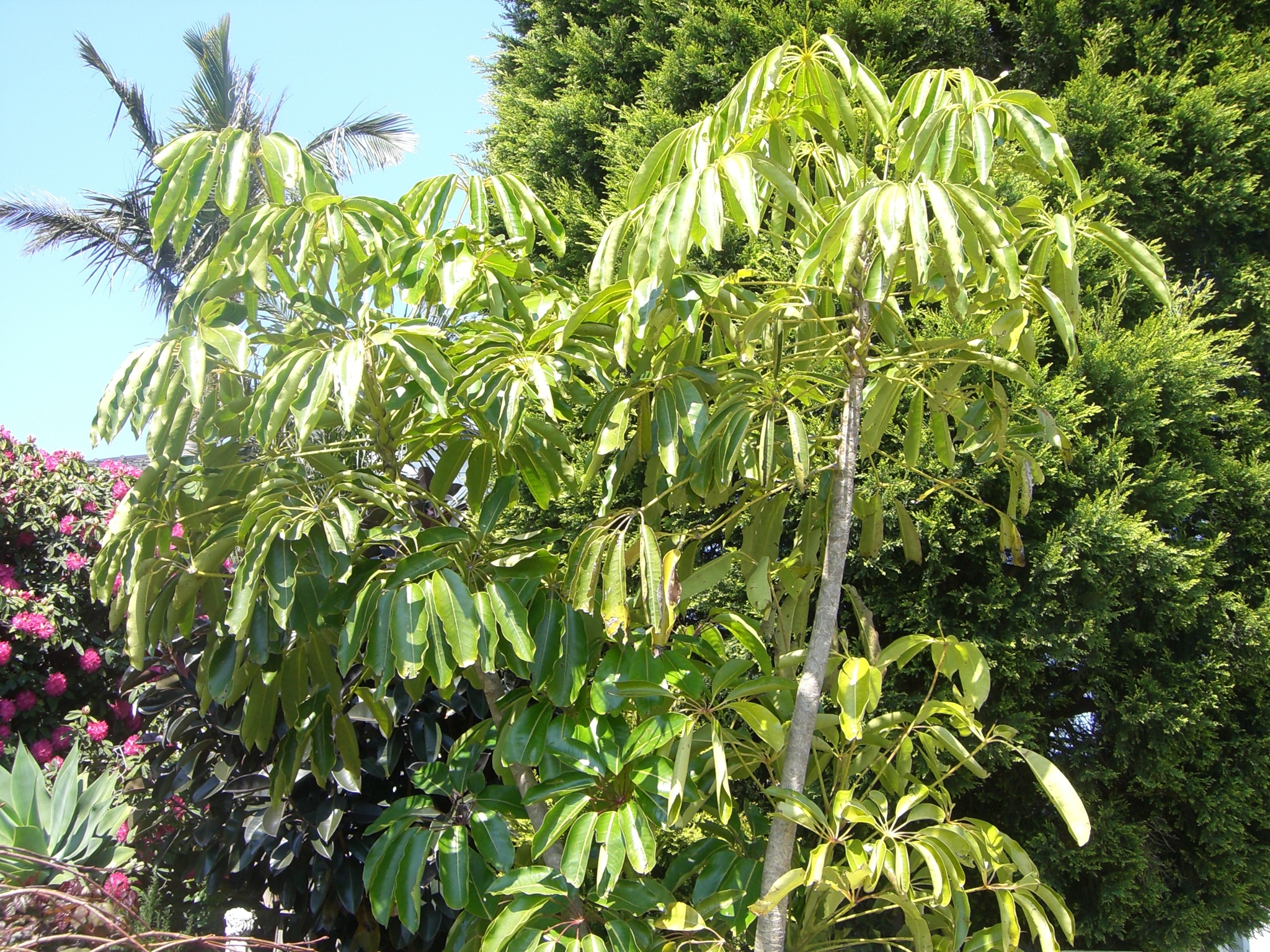
Commemorating J.G. Scheffler (1722–1811), physician from Danzig and friend of the botanists J.R. and G. Forster.
Evergreen trees, shrubs and climbers, the juvenile foliage sometimes differing dramatically from the mature foliage. Leaves mostly palmately divided, stalked, the base generally forming a sheath around the stem and with 2 stipules united to form a ligule. Leaflets mostly 3-20, stalked. Flower clusters terminal, sometimes appearing lateral. Flowers with petals mostly 5, edge to edge in bud, sometimes forming a cap. Stamens 5-many. Ovary with mostly 2-30 chambers. Fruit a drupe.
Widely grown in the tropics. S. arboricola is one of the most common indoor pot plants available.
Cuttings.
Some species occasionally used as sources of timber.
Leaves palmately compound, the stalk with a sheathing base; flowers more or less stalkless; ovary of 5-75 chambers.
About 900 species from tropical and subtropical regions, most abundant in the Americas but also S and E Asia and the Pacific.
Frodin (1975), Chih-bai Shang (1984).
Source: (2002). Araliaceae. In: . Horticultural Flora of South-eastern Australia. Volume 4. Flowering plants. Dicotyledons. Part 3. The identification of garden and cultivated plants. University of New South Wales Press.
